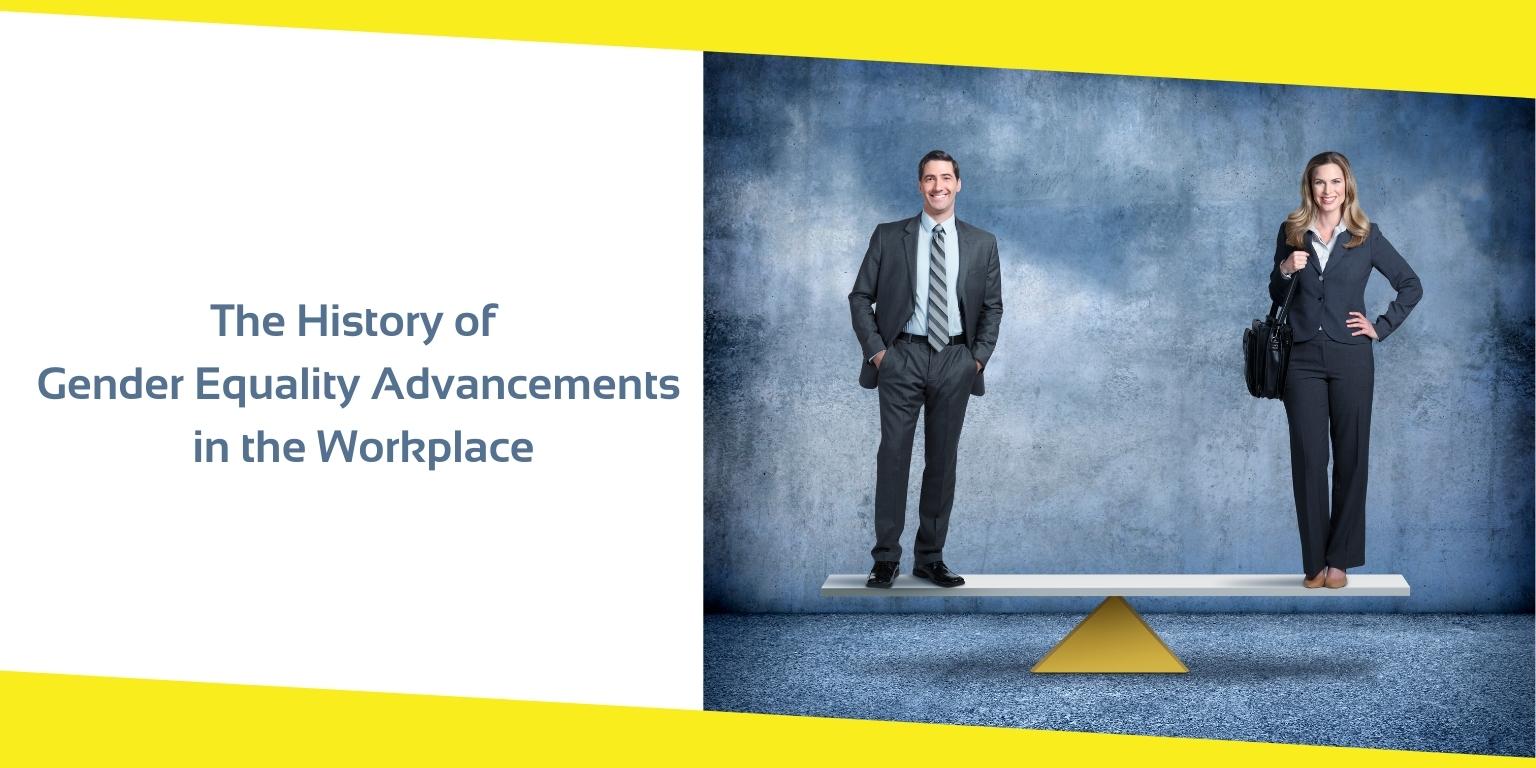The History of Gender Equality Advancements in the Workplace

The 19th Amendment was passed in August of 1920, giving women the right to vote. Though it has been over 100 years, there is still a significant amount of disparity in gender equality, and no place better represents that than in the workplace.
There is no doubt that gender gaps exist, but there has been improvement in them throughout the years. It’s essential to understand what gaps exist and how improvements in the workplace have taken place.
Contents
ToggleThe Early 20th Century
Prior to the early portion of the 19th Century, most women did not work outside of the home. Women that did work were typically unmarried and younger women. The Census Bureau knows that, during that time, only 20 percent of all women worked in what could be determined as “gainfully-employed workers.” Just 5 percent of women who were married worked outside of the home at all.
However, women were not excluded from participating in the workforce. Not only did they aid in child rearing and support the household, but they also often participated in the family business or worked to produce products or goods on farms.
A great deal of this limitation came from a lack of significant education, which is why, when women worked, they often did so as domestic workers or worked in factories. Just 2 percent of women that were 18 to 24 years of age ever went on to higher education.
Women Entered the Workforce
Throughout the 19th century, as time went on, women began entering the workforce, and by 1930, about 50 percent of single women and 12 percent of married women were in the workforce. Still, many left once married and began having children.
Many women were forced to take on jobs as their husbands went off to perform military duties, while the cost of living was rising too fast to accommodate a single-income household.
On to the 1970s
By 1970, it’s estimated that about half of all single women and 40 percent of married women were working at various levels. A key reason for this was the implementation of high school education at a mandatory level, leading to more women being educated to work in key positions.
Women also quickly took advantage of new technologies that allowed them to work in office spaces easily. Office jobs themselves helped to minimize the negative stigma associated with women working because the jobs were safer, cleaner, and “easier” for women to do.
By the end of the 1970s, women were expected to spend a good amount of their life in the labor force, and they began working towards it through increasing graduation rates.
Changes Improving Equality
The Pregnancy Discrimination Act in 1978 put into law protections for women and also acknowledged the high level of sexual harassment towards women in the workplace. In 1974, women finally gained the right to open a credit card with their own name without having a male co-signer.
By the 1990s, over 74 percent of women between the ages of 25 and 54 were employed. More education, better paying positions, and less discrimination, helped women to become more valuable to companies. Yet, even then, discrimination in the workplace was clearly evident.
The Wage Gap
One of the largest remaining inequalities for gender equality is the wage gap. The representation of women on corporate boards and in the tech industry continues to lack, though there is movement to improve.
The gender pay gap has remained about the same for the last 15 years. Research indicates that, in 2020, women earned about 84% of what men earned, doing equivalent types and levels of work. Based on this information, it would take women 42 additional days of work to earn what men did.
Women aged 25 to 34 earned 93 cents for each dollar that a man worked in the same age group. This is one area that is improving as women in that age group in 1980 earned about 33 cents less than men in that group.
Moreso, gender discrimination remains a big part of the workplace for women. Research indicates that in 2017, 40 percent of women stated that they had experienced some type of discrimination in the workplace, including earning less than men doing the same work, being treated as though they were incompetent, or experiencing small slights on an ongoing basis.
Motherhood remains a big factor in that level of discrimination as mothers are far more likely than fathers to state they need to reduce their work hours after having a child. Of women that took time off, 25 percent of them report experiencing a negative impact, while just 13 percent of men who returned to work after taking time off saw any negative experience.
There is no doubt a lot of change is still necessary,” says Nicole Parsons Newfoundland, human resources professional. “We need equal representation of women of color in leadership positions, on corporate boards, and as owners of their own companies.”
In one survey, 45 percent of respondents said that women must be paid equally to have equal representation within the workplace, as that is a key first step towards gender equality in the workplace.
Recommended For You
4 Things to Consider When Choosing a PDF Reader For Business Tasks
Most Inside
Most Inside offers high-quality recommendations and valuable updates to enhance all aspects of your life, providing premium guidance and enriching experiences.




